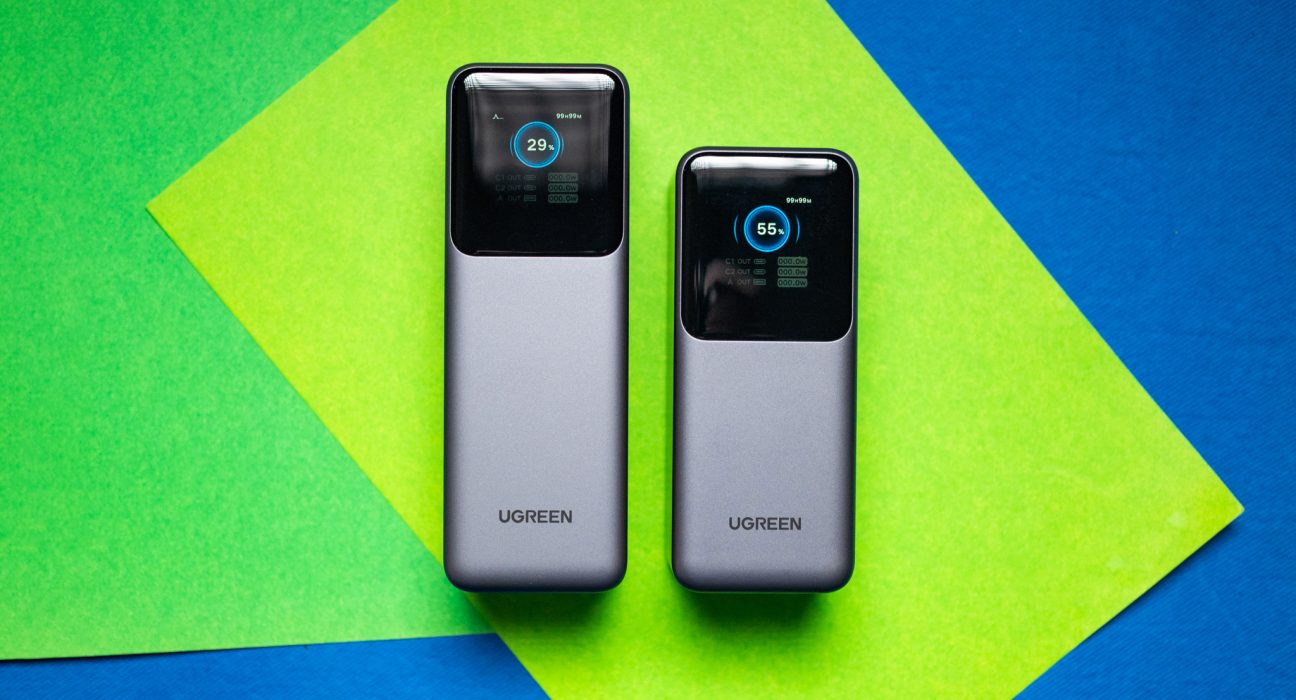UGREEN makes the The best GaN chargersand the brand is slowly building a good portfolio of external batteries. I used the 145W Power Bank Over the last year, I recently switched to the Fabulous 300W Power Bank With a massive 48000mAh battery, UGREEN's latest products in this category belong to the Nexode series and may be their best products yet.
There are three products in the Nexode Power Bank series: the base model has a 12000mAh battery and goes up to 100W, and is a decent value. for only $39 on AmazonThe mid-tier offering is a 20,000mAh power bank with two USB-C ports alongside one USB-A port, and goes up to 130W. and sells for $69.
The version I'm looking at is the 25000mAh option; it has two USB-C ports and one USB-A port, and can reach 200W when both USB-C ports are in use. The 25000mAh version The power bank costs $99and UGREEN is effectively trying to undermine its rivals.
UGREEN’s earlier power banks had a traditional design, but the Nexode Power Bank has a sleeker design that makes it much more portable. The rectangular chassis makes it very comfortable to carry around, and at 609g, it’s not that heavy either. The power bank consists of five 5000mAh cells housed within the chassis and features the usual overcharging and overheating protections.
The chassis itself is made of plastic, and the build quality is fantastic. I didn’t notice any issues during the month I used the power bank. The only issue I have in this area is that the back and sides, where the charging ports are located, have a simple black design instead of the grey colour scheme, and this affects the overall effect. Outside of that, the design is similar to what Anker offers in its Prime series, and it’s great to see other brands switching to this aesthetic.
I also like that the power bank has rubber feet on one side, ensuring it doesn’t slide around on a desk. This makes a noticeable difference when plugging in a cable, and is a decent addition. There’s a power button on the side that activates the TFT panel and you can see the power bank’s battery level, the real-time charging status of each port, and the remaining charging time.
I’m a big fan of chargers and power banks with built-in power meters, and it’s great to see UGREEN going down this route. The charging details highlighted on the TFT panel are accurate (I correlated the values with the Power-Z KM003C charge tester), and it’s always interesting to see how much power is being sent to a device in real time.
If you need more detail, pressing the power button once more reveals a volts and amps gauge, which is especially useful with phones to see how charging speeds change over time. The 25,000mAh battery is more than enough to charge just about any device (even laptops), and the best part is that the main USB-C port goes up to 140W.
The Nexode Power Bank is decent if you need to charge two devices at once – you get 200W of power (100W from each USB-C port), making it very convenient for charging a phone and laptop simultaneously. I used the Nexode Power Bank with the Pixel 9 Pro XL, Xiaomi 14 UltraVivo X100 Ultra, Honor Magic V3Steam Deck, iPad Pro, and dozens of accessories for the past three months, and it's been reliable.
This year, I’ve been increasing my use of power banks overall, and after a few dozen charging cycles, the Nexode power bank has been achieving the same efficiency results, so there are no issues there. In fact, the only issue I have with the power bank is that the USB-A port is limited to 22.5W, which significantly limits its use. And, since other power banks now go up to 65W via USB-A, UGREEN needs to do the same.
Another limitation is that the power bank charges at 65W – it takes over three hours to charge the internal battery, and UGREEN should have included the ability to charge the battery at 140W. The USB-C ports are based on the USB 3.1 PD standard, and I’ll share a rundown of the power profiles:
- USB-C1 Output (140W Max): 5V/3A (15W), 9V/3A (27W), 12V/3A (36W), 15V/3A (45W), 20V/5A (100W), 28V/5A (140W)
- USB-C2 Output (100W Max): 5V/3A (15W), 9V/3A (27W), 12V/3A (36W), 15V/3A (45W), 20V/5A (100W)
- USB-A output (22.5W max): 5V/3A (15W), 9V/2A (18W), 12V/1.25A (18W), 10V/2.25A (22.5W)
- USB-C1/C2 input (65W max.): 5V/3A (15W), 9V/3A (27W), 12V/3A (36W), 15V/3A (45W), 20V/3.25A (65W) )
- USB-C1 + USB-C2 Output (200W Max): 100W + 100W
The massive 25000mAh battery combined with 200W of power makes this one of the best power banks on the market, and I like the changes to the design – the power bank is now much more portable. The USB-A port is of limited utility and the power bank takes a long time to charge its internal battery, but if you don’t mind those drawbacks, the Nexode power bank is a great choice.
UGREEN Nexode 25000mAh Power Bank
The Nexode 25000mAh power bank has a much better design than its predecessor, and you get a TFT panel with real-time charging information and a massive 200W power budget.
